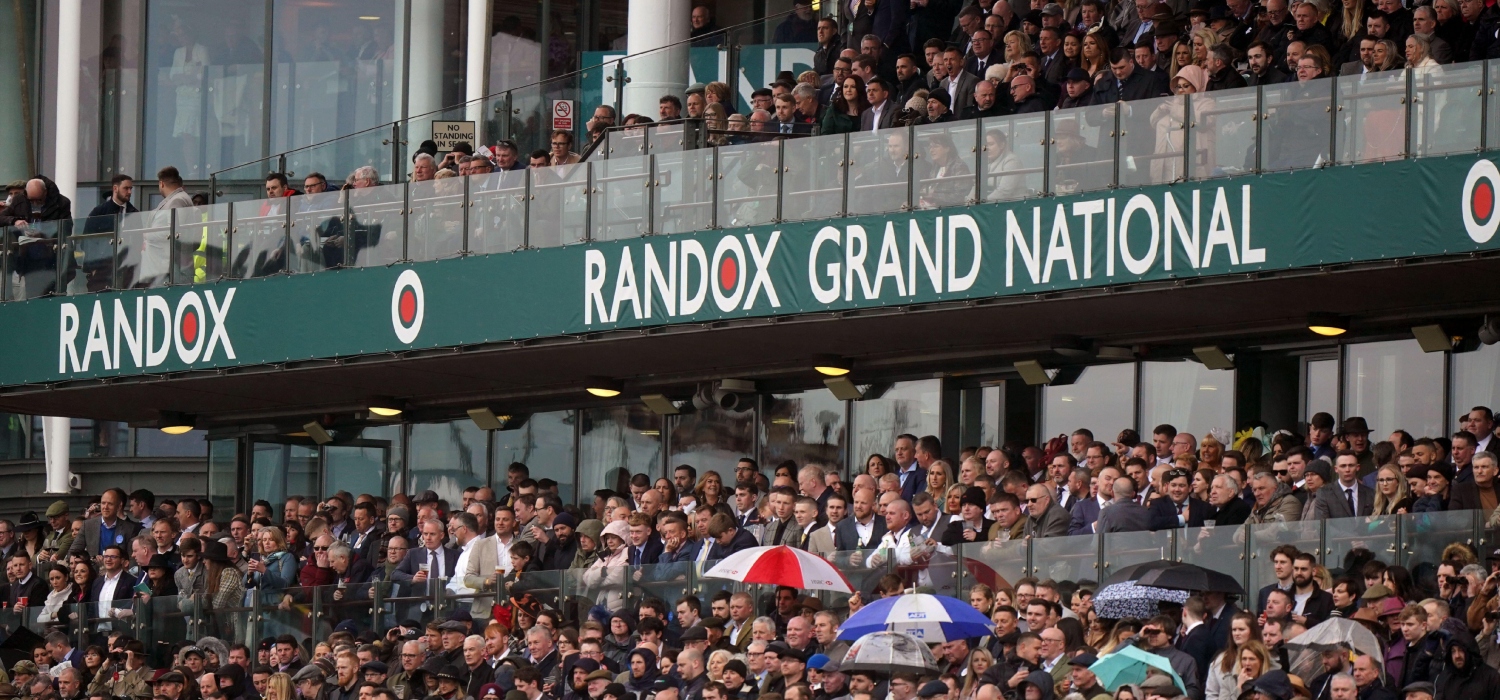
Trends expert Matt Tombs is back to take a look at the Aintree Grand National. All prices mentioned are correct at time of writing…
Being a microcosm of society, punters could be divided up between those who resist change and those who relish the new opportunities it brings. Embracing change is particularly important in punting as every angle gets worked out by the market eventually.
The Grand National is a race that has changed out of all recognition. Even if you embrace the concept of change, it’s easy to make the mistake of underestimating the scale of it. I’ve been guilty of that – thinking I understood the way the National had changed, whilst actually misjudging just how different the race now is.
UK & Ireland Meetings 🐎
🏴 Exeter 13:15
🏴 Pontefract 14:00
🇮🇪 Dundalk 17:25
🏴 Wolverhampton 17:30Markets: https://t.co/Y8BZSE38Nj 👈 pic.twitter.com/5bXExVRsJJ
— Matchbook Betting Exchange (@TeamMatchbook) April 11, 2023
Firstly, a recap on the big change – fence alterations in 2013. They look similar, but the wooden cores were replaced with plastic. That made the overall structure less rigid, so it ‘gives’ more when a horse hits it.
That has an effect, but the bigger impact is the size of the core and the green spruce on top of it. Each of the fences is the same height, but pre-2013 there was about 7 inches of tightly packed spruce on top. Since 2013 there has been about 14 inches of loosely packed spruce, i.e. the plastic core is about 7 inches shorter than the old wooden core.
The fences in the National are various heights, but a third of the 30 obstacles jumped are a similar height to 4 foot 6-inch fences on park courses, with the other two-thirds being around 5 feet. With about 14 inches of loose spruce you can jump through, horses hitting fences at the stiffer park courses can find the National fences easier to jump.
The optimal jumping technique now is to brush through the loose spruce, using a lower trajectory and landing running – Tiger Roll was the perfect example of this. Jumping over the fences Red Rum style wastes energy, and horses don’t tend to land with the same momentum.
We’re no longer looking for a horse who is first and foremost a sound jumper, (usually having honed their technique from lots of chasing experience).
The crucial qualities now are:
- First and foremost – stamina. The more forgiving fences mean they go quicker and so few horses stay the trip fully
- Class – although the cut will be lower than the 142-145 in the last 6 renewals, it will still be a high quality event and you need a cruising speed to lay up
- The ability to cope in a field of 40 horses
I’d been looking at the race and saying that it had become more like other Class 1 marathon handicaps, (marathon defined as 3m3f+,) and so being unexposed and an improver had become a bigger factor.
I think I was underestimating just how much like those other marathons it had become – I’d thought the Grand National was still quite distinct.
To illustrate this, it’s worth a comparison with the Irish National, which has a field of 30, and is usually the classiest marathon handicap bar the Grand National.
In the last 9 Irish Nationals, 4 winners were first season chasers and 5 of the 9 had run only 3-6 times over fences – i.e. being a really unexposed improver was often the winning formula.

Going into last season’s Grand National I knew that 6 of the previous 7 winners had been second-season chasers. Only the great Tiger Roll, the last time he won, was as late as his third season chasing. (In contrast, the last 10 Nationals over the wooden fences produced only 1 winner who was in their second season over fences, as jumping experience was so much more important then.)
All those 6 had run 10-16 times over fences though. I made the mistake of thinking that meant there was much more of a balance between being battle-hardened as well as being unexposed/improving – than in (e.g.) the Irish National. I therefore thought first season chaser Noble Yeats, who’d had seven chase starts, wouldn’t have enough experience.
With the benefit of hindsight, Noble Yeats was the classic novice plotted up for a valuable marathon handicap in the spring, being a real eye-catcher behind Ahoy Senor in the Towton. The reason a first season chaser winning was so unusual was not that he was a freak, but that virtually nobody else had tried – he was only the 4th first season chaser to tackle the Plastic National.
I think Emmet Mullins’ success will inspire others to follow his lead with first-season chasers – although trainers, many of whom can be firmly categorised as resistant to change, may take a while to catch on. Dunboyne 60.0, (trained by the innovative Gordon Elliott), is the only first-season chaser amongst the 50 confirms. You can lead trainers to water but how quickly can you make them drink?
So far in the 9 Plastic Nationals, horses in their first or second season over fences are 7/89 – 86pt (97%) profit. Given there are 40 runners there are few trends that produce a profit, as there are so many losers. That shows just how under-bet these horses are – punters are stuck in the mindset of yester-year about the nature of the race.
With 89 qualifiers in 9 renewals we’ve been talking about approximately one-quarter of the field. This is not to say that a third or fourth season chaser can’t win – they obviously can and some will. It’s to suggest that being unexposed and well handicapped is becoming an ever more important element – and its under-bet.
There are lots of ways to get a horse well handicapped but an obvious one in a marathon is to run them over much shorter. The horse therefore doesn’t need to inherently improve; the improvement is natural over the (marathon) trip that suits.
Horses running over a marathon trip for the first time tend to be under-bet generally, punters questioning their stamina and often preferring those proven over the trip – but who are often exposed at it. Of the other 8 ‘big’ marathon handicap chases in Britain, (the 7 Class 1 races and the Eider,) you’d have made a profit backing marathon debutants blind this century in 4 of them.
Both the last 2 Grand National winners, Noble Yeats & Minella Times, were marathon debutants, (as was Many Clouds earlier in the ‘plastic-era’).
Whilst my short-list certainly won’t be restricted to such horses I’m particularly interested in first/second season chasers making their debuts in a marathon.
The qualifiers from the 50 who remain are:
- Fury Road – 90.0
- Capodanno – 25.0
- Lifetime Ambition – 42.0
- Cape Gentleman – 240.0
- Aint That A Shame – 29.0
- Gabbys Cross – 60.0
- Our Power – 27.0
- Dunboyne – 60.0
- Gevrey (who presumably won’t run having finished 2nd in the Irish National on Monday)
- Darrens Hope – 300.0
When looking at this group of horses, that ‘appear the right type’, my first question is will they stay – as so few will. The one that initially jumps out as an improving type, Aint That A Shame, looks a doubtful stayer to my eye.
One that’s interesting is Gabby’s Cross. He was beaten only 4l in the Grade B Paddy Power at Leopardstown off 143 at Christmas and was 3rd off the same mark in the Leinster National last time – both times looking like he wanted further. Off the same mark in Britain he looks a big price, especially if the ground is decent.

The National is such a tough test there’s an obvious preference for the race to have always been the big target of the season. I’m cautious about horses that have had a hard race at Cheltenham in particular.
4 of the 9 Plastic National winners bypassed the Festival. Tiger Roll twice won the Cross-Country where they go steadily and so don’t tend to have too hard a race. Pineau De Re ran over hurdles. Noble Yeats prepped when 9th in the Ultima.
Many Clouds is the one Plastic National winner who looked to have had a hard race at Cheltenham when 6th in the Gold Cup. There were 4 weeks between Cheltenham and Aintree rather than 3 that year. That’s the case again this year, which will help – but I’d still be worried that horses like Noble Yeats (4th Gold Cup – 10.5), Gaillard Du Mesnil (won Non-Quite-4-Miler – 16.5) & Corach Rambler (won Ultima – 8.4) may have left their races at Cheltenham.
Even if you think you have a good angle into a race and have found a horse(s) to back from it, it’s a good discipline to re-approach the race fresh using only general principles – to stop that angle from dominating your thinking.
Doing that the horse I’m interested in is 2021, Albert Bartlett winner Vanillier (27.0) He shapes like a thorough stayer, and it’s worth reiterating how few horses really see out the trip given the pace they go now – he looks one that could get home.
The issue is he’s always been a dodgy jumper – you wouldn’t have considered him for this before the fences changed. However, he’s had an operation for kissing spines and was better over the stiff Fairyhouse fences last time when just failing to catch Kemboy in the Bobbyjo. He may not take to it, but if he does I think he’s potentially really well handicapped for a test like this off 147.
Given there are typically 6 places on offer on the day and 40 runners, the maths is against you in the place market. Unless the horse is a huge price, I prefer to split stakes and back 2 or 3 win only – Vanillier is very much a win-only bet.
Good luck!








